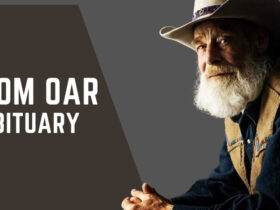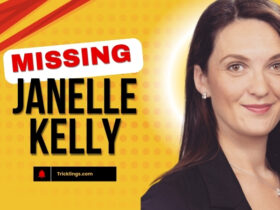At some point, we all realize we own more than we need. Maybe it’s a closet overflowing with clothes, a garage packed with forgotten items, or kitchen cabinets filled with gadgets we rarely use. Letting go should be simple, but for most people, it’s stressful. What if you need something later? What if you regret getting rid of it? These thoughts make downsizing harder than it should be.
In places like Southfield, Michigan, where families are settling into smaller homes and retirees are moving into condos, the need to simplify is growing. At the same time, busy lifestyles make decluttering feel overwhelming.
In this blog, we will share practical ways to make smart decisions, reduce stress, and embrace a simpler, more organized lifestyle.
The Smart Way to Decide What Stays and What Goes
One of the biggest mistakes people make when downsizing is trying to do it all at once. A better approach is to work in categories, not rooms. Instead of tackling the entire kitchen, start with dishes. Instead of sorting through every closet, begin with winter coats.
A practical method is the Four-Box Rule—every item goes into one of four categories: Keep, Donate, Sell, or Toss. If you struggle with deciding, ask yourself:
- Have I used this in the last year? If not, it’s probably not essential.
- Would I buy this again today? If the answer is no, why keep it?
- Does this item support my current lifestyle? If it belongs to a version of you that no longer exists, it might be time to part with it.
Larger, sentimental items—like furniture, family heirlooms, or old collections—can be trickier. This is where temporary solutions can help. If you need time to decide on big items, reliable Southfield Michigan storage units can give you breathing room without forcing rushed decisions. Having a temporary place for things allows you to live without them for a while and see if you truly miss them.
But storage isn’t an excuse to hold onto things forever. If you haven’t needed something in six months to a year, it’s probably safe to let it go.
Why We Hold Onto Things We Don’t Need
Logically, we know we should get rid of things we don’t use. But emotions don’t work that way. Here’s why people struggle to let go:
- The “What If” Dilemma – What if I need this later? This mindset leads to keeping things “just in case,” even when the chances of actually using them are slim.
- Sunk Cost Fallacy – If we spent money on something, we feel like we should keep it, even if it’s useless now.
- Guilt & Obligation – Gifts, inherited items, and sentimental keepsakes make people feel guilty for letting go. But keeping something out of guilt only creates stress.
- The Illusion of Potential – That treadmill collecting dust? The expensive art supplies never touched? We keep things for the person we wish we were rather than the one we actually are.
Recognizing these patterns is key to breaking free from clutter. The goal is to keep items that add value to your current life—not the life you once had or might have in the future.
Making Downsizing Easier (and Even Fun)
It may sound impossible, but downsizing doesn’t have to be a miserable process. Here’s how to make it easier:
- Turn it into a challenge. Try the “One-A-Day” method—get rid of one item every day for a month. It’s less overwhelming and adds up fast.
- Use the 20/20 Rule. If something costs less than $20 to replace and you haven’t used it in over a year, let it go.
- Digitize what you can. Old photos, paperwork, and sentimental items take up space. Scanning and storing them digitally preserves memories without the clutter.
- Make it social. Invite friends or family to help. Sometimes an outside perspective makes decisions easier—and you might even have some fun reminiscing while sorting.
- Sell or donate with purpose. Knowing your unused items are helping someone else can make parting with them feel good.
Remember, downsizing doesn’t have to happen overnight. It’s a process, and every step forward brings more clarity, space, and peace of mind.
Why Downsizing Feels So Overwhelming
If downsizing feels like a big deal, that’s because it is. Our belongings aren’t just objects—they carry memories, identity, and a sense of security. That old couch? It’s where your kids used to nap. The stacks of books? They remind you of a time when you had hours to read. Even kitchen gadgets—most of which you rarely use—represent good intentions.
Beyond the emotional side, there’s the sheer effort involved. Sorting through years of stuff is exhausting. There’s also decision fatigue—should you keep the fancy blender you’ve only used twice? What about those jeans that might fit again? Each decision takes energy, which is why people often delay the process until they’re forced to downsize quickly.
Then there’s the pressure to do it “right.” Social media glorifies minimalism, showing pristine homes with barely a thing out of place. But downsizing doesn’t mean you have to live in an empty, ultra-modern loft. It just means creating a space that fits your lifestyle, with fewer things weighing you down.
The trick? Start small, focus on what matters, and remember that letting go isn’t losing—it’s making room for a better, more manageable way of living.
The Bigger Picture
Beyond just making your home more livable, downsizing has broader benefits. It reduces waste, saves money, and simplifies life in ways that go beyond just physical space.
More people are embracing experiences over possessions, prioritizing travel, hobbies, and time with loved ones over accumulating stuff. The tiny home movement, the rise of digital nomads, and even eco-conscious living trends all connect back to a common theme—owning less but living more.
It’s also practical. The less stuff you have, the less you have to clean, maintain, and worry about. That means more time, more freedom, and more mental clarity.
Downsizing isn’t just about getting rid of things—it’s about creating a life that feels lighter, easier, and more intentional. And when done right, it’s not about sacrifice—it’s about gaining space, time, and energy back for what truly matters.
The bottom line? Letting go isn’t losing—it’s making space for something better. Downsizing doesn’t mean giving up everything you love. It means keeping what truly adds value and letting go of what doesn’t.
Start small, focus on what supports your lifestyle, and remember that the goal isn’t just less stuff—it’s more freedom. The less we hold onto it, the lighter life feels. And that’s a change worth embracing.













